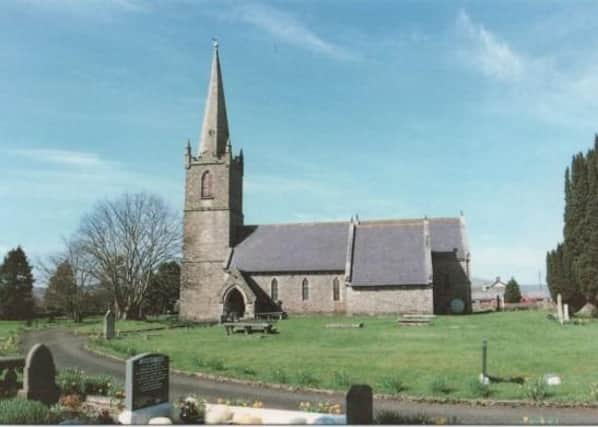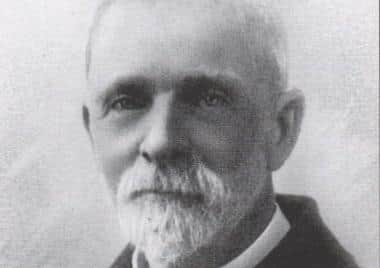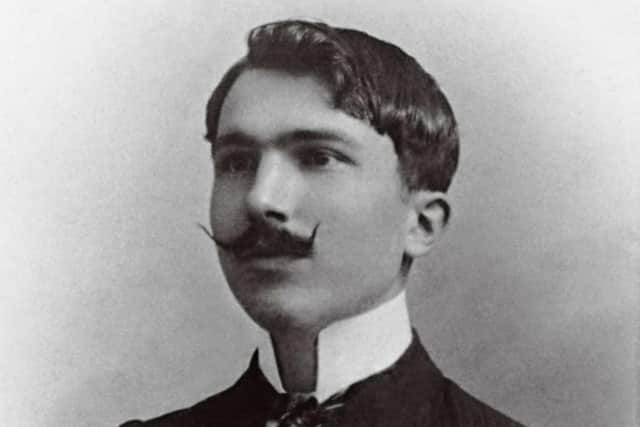Local clergyman’s daughter loved the author of Zorba the Greek


Preaching to a congregation of Orangemen in Belfast’s Christ Church, the pulpit rocked with the extensive rollcall of humankind at the start of Rev Drew’s sermon - “Let churches and religious institutions, families and individuals, princes, popes, peers and prelates, operatives and traders, come all to the test of God’s infallible Word”!
A News Letter reader introduced us last Wednesday to two of the Rev Drew’s children - son Thomas, a greatly acclaimed architect, and daughter Catherine, a prominent author, journalist, London correspondent for the News Letter and devoted charity worker.
Advertisement
Hide AdAdvertisement
Hide AdThomas was knighted by Queen Victoria in 1900 for his considerable architectural legacy which included many Irish churches such as Belfast’s St Anne’s Cathedral, Dublin’s Christ Church and St Patrick’s Cathedrals, Armagh’s Protestant Cathedral and Londonderry’s St Columb’s.


Following last week’s page about Rev Drew’s illustrious off-spring a very informative note arrived in Roamer’s mailbox from prolific author and local historian Graham Mawhinney.
“With reference to Sir Thomas Drew, it wasn’t just major cathedrals that he designed,” Graham advised, adding “St Columba’s Church in Draperstown was designed by him - opened 1888 - and described by Canon Hugh Forde (1847-1929) as ‘one of the most perfect country churches in Ireland, every detail being in harmony.’”
Graham’s short introduction to Canon Forde follows in a moment, with a fuller outline in the near future, including the Canon’s daughter Kathleen’s brief romance with Nikos Kazantzakis, author of Zorba the Greek.
Advertisement
Hide AdAdvertisement
Hide Ad“St Columba’s is a beautiful church,” Graham told Roamer, “certainly worth a visit. I have attached a photo.”


The church, the Canon and his daughter, and Mr Mawhinney’s latest book containing some truly historic family correspondence - The Graham Letters (1792-1907) - will feature here just as soon as Roamer gets to Draperstown.
But for now, an introduction to Canon Forde, before sharing a little more of Catherine Drew’s remarkable life story, which I promised last week.
The wider Forde family boasts a long and illustrious history, here and around the world, with Hugh’s father Lewis settling in Saffi, Morocco, in the mid-1800s.
Advertisement
Hide AdAdvertisement
Hide AdBefore emigrating, Lewis married a Miss Flavelle from Dungannon and Hugh was born in Londonderry on 1 April 1847.
Hugh was educated at Dungannon Royal School, where he boarded while has father flourished as one of the earliest British settler-traders on the coast of Morocco.
So respected by the Moors was Lewis Forde that he became Financial Advisor to the Sultan, negotiating vast economic transactions with the British Government.
Lewis died in Tangier in 1869 while son Hugh was studying in Trinity College Dublin and gathering multiple degrees, masters and a doctorate!
Advertisement
Hide AdAdvertisement
Hide AdFollowing curacies in Macosquin and Maghera Hugh became Rector in Kilcronaghan, Ballynascreen and Ballykelly successively before becoming Canon of Londonderry from 1897 to 1922.
Hugh had five children, including Kathleen, during his first marriage to Mary Ross from Limavady.
After Mary died he married Dorothea Millar from Buncrana in 1884 and had three more children, one of whom, Lieutenant Kenneth Forde, was killed in action in Flanders on 24 July 1915 during WWI, 105 years ago on Friday.
Canon Hugh retired to Portrush in 1922 where he remained until his death in 1929.
Advertisement
Hide AdAdvertisement
Hide AdHe wrote and published four books with intriguing titles, each sounding like a peak-viewing TV series - Round the Coast of Northern Ireland; Ulster at Bay; The Giant’s Causeway and Dunluce Castle, and Sketches of Olden Days in Northern Ireland.
Today’s page ends with a promised post script to the fiery Christ Church preacher’s daughter, Catherine Drew.
Born in Broughshane, County Antrim on May 27, 1832, she was the third in a family of eight daughters and four sons, although most of her siblings died young.
Catherine spent most of her childhood in Belfast, where her father was the rector of Christ Church.
Advertisement
Hide AdAdvertisement
Hide AdShe moved to Dublin to live with her brother Thomas in 1866 and probably began her journalist career writing articles for the Irish Builder magazine, one of Thomas’s numerous professional interests.
She also wrote for the (then) Belfast Newsletter, and following advice from its proprietor, James Alexander Henderson, Catherine moved to London in 1871 becoming the paper’s London correspondent.
She wrote two regular columns, Metropolitan Gossip and Ladies’ Letter, thought to be amongst the earliest women’s society news pages.
Her writing also featured in The Literary World, The British Architect and London Society.
Advertisement
Hide AdAdvertisement
Hide AdCatherine was one of the founding members of the Ladies’ Press Association, and also became a prominent figure in the Institute of Journalists, representing the Institute at several international gatherings.
She was serving as the Institute’s vice-president when she died in London in 1910. For many years Catherine also worked for the Institute’s Orphan Fund, a charitable organisation that she instigated in 1891.
She also wrote novels, the best known are ‘Harry Chalgraves’s Legacy’ and ‘The Lutanistes of St Jacobi’s’.
Catherine bequeathed a jewel-studded gold bracelet to the Institute of Journalists, given to her on her retirement in 1908. It is still worn by women presidents, or the wives of male presidents, and is known as the ‘Drew Bracelet’.